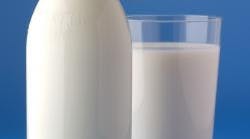Bones are made of a matrix of protein filled in with minerals, including: phosphorous, the second most abundant mineral in bones; magnesium, an important electrolyte; and manganese, a versatile mineral that also functions as part of our antioxidant defense. Other compounds, such as vitamin K—known mostly for its critical role in blood clotting — also are important to healthy bone architecture.
Calcium is the most abundant mineral the body, with 99 percent of it concentrated in bone, mainly in the form of a compound called hydroxyapatite, which is in reality a combination of calcium and phosphorous. The bones act as a functional calcium repository or bank that supplies the body’s immediate needs during times when dietary calcium is inadequate.
Calcium is important to nearly all bodily functions. One of the most pressing immediate needs for calcium is muscle contraction (including cardiac muscle); another is blood clotting. Both require calcium on a minute-to-minute basis. Therefore, blood levels of calcium are maintained under very strict control. If calcium from diet is even slightly insufficient, the body goes into blood-calcium restoration mode: The parathyroid hormone stimulates increased absorption of calcium, lowers excretion and releases calcium from bones, all controlled by vitamin D.
Blood levels of calcium are not an indicator of nutritional status or bone health. Bone integrity is equally dependent on forces that can trigger release of calcium and other minerals from the bone. For example, any condition that decreases blood pH levels may result in loss of bone calcium. This may be a problem with high-protein, “Westernized” diets typically low in fruits and vegetables.
“While food producers are developing an increasing range of calcium fortified products, many are missing a big opportunity in combining calcium with other ingredients that improve its absorption and efficacy,” states Hans Schinck, category manager for Corbion Purac, Lenexa, Kan. “Magnesium is an example.”
Magnesium is an important mineral for building healthy bones, as it converts vitamin D into its active form so it can aid calcium absorption. Research proves calcium’s effectiveness and benefits to bone health and osteoporosis prevention are greatly impaired without adequate levels of magnesium in the body.
The K konnection
Vitamin K is critical to bone health in a way that also has been linked to reduction of risk for cardiovascular disease. There are two primary forms of K: phylloquinone (K1), obtained from green plants; and menaquinone (K2), synthesized by bacteria, including gut bacteria. In foods, K2 is obtained in some animal products, meats and eggs (as MK-4) as well as fermented dairy products, particularly as MK-7 from certain cheeses and natto, a fermented soy product. Vitamin K is needed for modification of several bone proteins synthesized in response to vitamin D.
Modification of these proteins by vitamin K affects their calcium-binding ability in a way that allows calcium to become part of the bone hydroxyapatite, the primary mineral compound of bone. Some studies show that healthy vitamin K status is associated with a decreased risk of hip fractures (although not necessarily an increase in bone mineral density) with vitamin K1. Studies in Japan, where natto is an important source of vitamin K2, showed decreases in hip fractures and increases in bone mineral density.
Surprisingly, this could have ramifications vis. cardiovascular disease and the “calcium paradox,” wherein a decrease in bone mineral density is associated with accumulation of calcium in artery walls.
Vitamin K2 deficiency is being increasingly linked to both osteoporosis and vascular calcification, a feature in most cardiovascular disease. While vitamin K1 is most associated with blood clotting, vitamin K2 is more immediately associated with modification of a particular bone protein called matrix GLA protein (MGP), believed to prevent the accumulation of calcium in smooth muscle tissues of artery walls.
MGP is synthesized by osteoblasts, bone-building cells. Their calcium-binding ability enhances bone mineral density, making vitamin K2 a potential determinant of the fate of calcium — whether it participates in the construction of healthy bones or becomes integrated into the smooth muscle of arteries.
A more holistic, multi-nutrient approach to healthy food and drinks not only maximizes the efficacy of each ingredient, but also helps manufacturers differentiate their products. Combining scientifically proven ingredients, such as calcium, magnesium, vitamin K and other members of the bone matrix enables more powerful health claims and better targeting of consumers.


